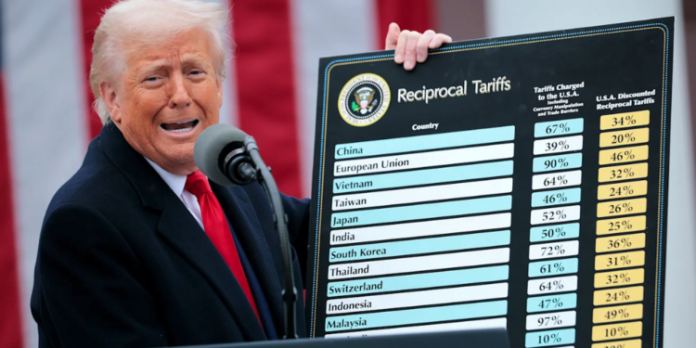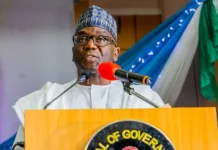In a dramatic escalation of trade hostilities, the administration of former U.S. President Donald Trump has imposed a sweeping 104% tariff on Chinese imports, citing Beijing’s failure to meet a deadline to remove its retaliatory tariffs.
The announcement marks a significant intensification of ongoing economic tensions between the world’s two largest economies. Trump, who has previously claimed that China is “desperate to make a deal,” is doubling down on his aggressive tariff policies.
White House Press Secretary Karoline Leavitt officially announced the tariff measure during a press briefing on Tuesday. She stated that the new tariffs will come into force at midnight on April 9.
Echoing Trump’s hardline stance, Leavitt said, “The president believes that when America is hit, he hits back even harder. That’s the reason why a 104% tariff will be implemented on Chinese imports starting tonight at midnight.”
Leavitt further indicated that while the administration remains firm, Trump would be open to negotiations if Chinese President Xi Jinping were to approach talks with a cooperative attitude. She described Trump as being “gracious” in the event that China seeks a path toward resolution, hinting at the possibility of renewed diplomatic dialogue.
Background and Global Response
This latest tariff action adds to Trump’s existing series of reciprocal trade measures targeting Chinese goods. The new 104% levy follows Trump’s declaration of April 4 as “Liberation Day,” during which he unveiled a comprehensive list of new tariffs. The move has elicited a range of responses from the international community, with some countries pushing for improved trade agreements with the U.S.
China, however, swiftly countered the initial tariff plan by imposing a 34% reciprocal tariff on American products, accusing Washington of employing coercive tactics and promising to “fight to the end.”
The Trump administration has defended its assertive trade agenda by accusing China of using non-market tactics to achieve dominance in critical manufacturing sectors and causing severe damage to American industries.
Trump’s Position on Tariffs
Despite overtures from trade partners seeking exemptions or adjustments to U.S. tariffs, Trump remains unwavering in his commitment to his tariff strategy. In a meeting with Israeli Prime Minister Benjamin Netanyahu on Monday, Trump made it clear that he has no intention of backing down.
“We’re not considering that,” Trump said when asked about potential tariff relief, though he did express a willingness to strike “fair and good deals with every country.”
China’s Official Reaction
In response, China’s Ministry of Commerce, via the state-run Xinhua news agency, issued a firm rebuke to the U.S. proposal of an earlier 50% tariff hike, pledging to adopt strong countermeasures to defend its national interests.
The Ministry’s statement condemned the American approach as “unilateral bullying” and accused the U.S. government of engaging in “blackmail.”
Labeling the proposed increase as unfounded and a violation of global trade rules, the Ministry insisted that China’s retaliatory actions are lawful and necessary for protecting its sovereignty, security, and economic development. The statement emphasized Beijing’s commitment to upholding a stable and fair international trading system.
Furthermore, the Ministry charged the U.S. with aggravating the conflict by introducing additional tariff threats, arguing that such actions only serve to destabilize global trade and economic cooperation.














